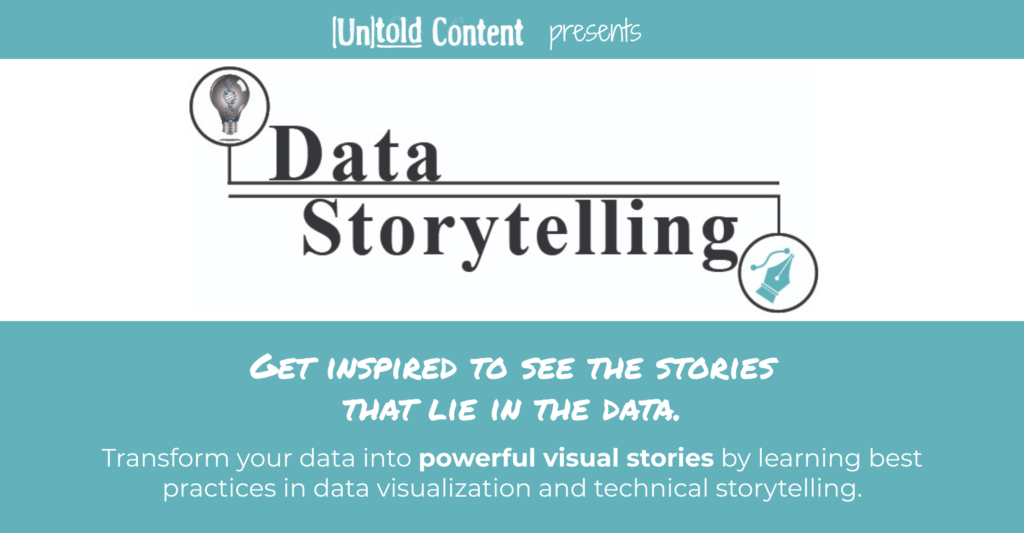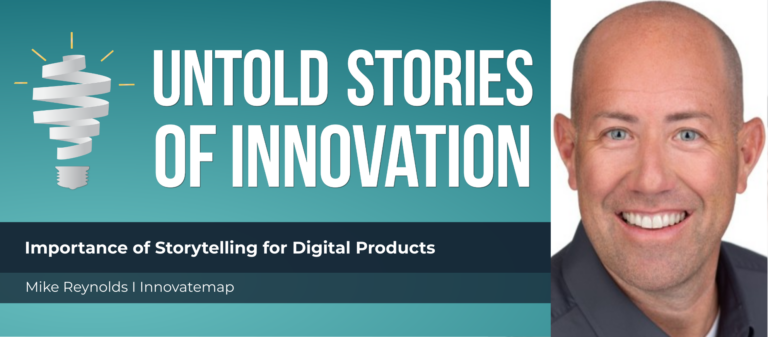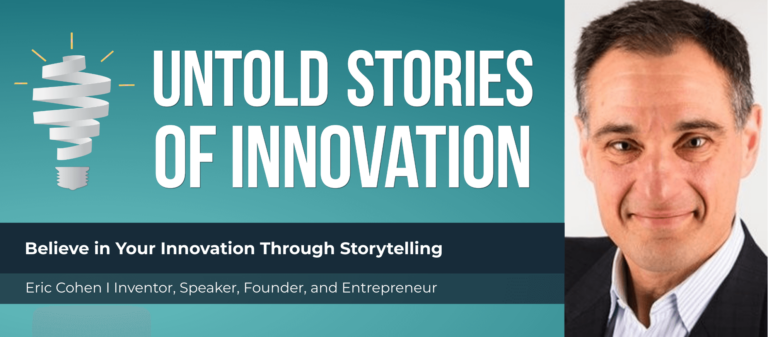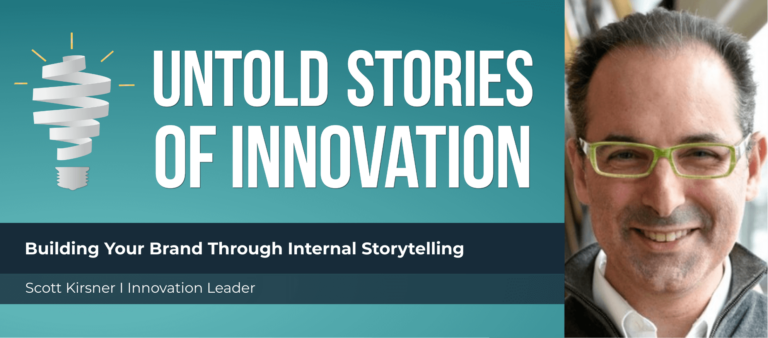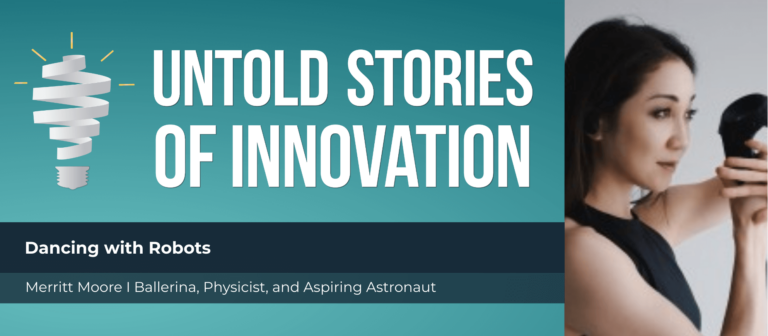Exploring The Future of R&D with Lee Green of IRI
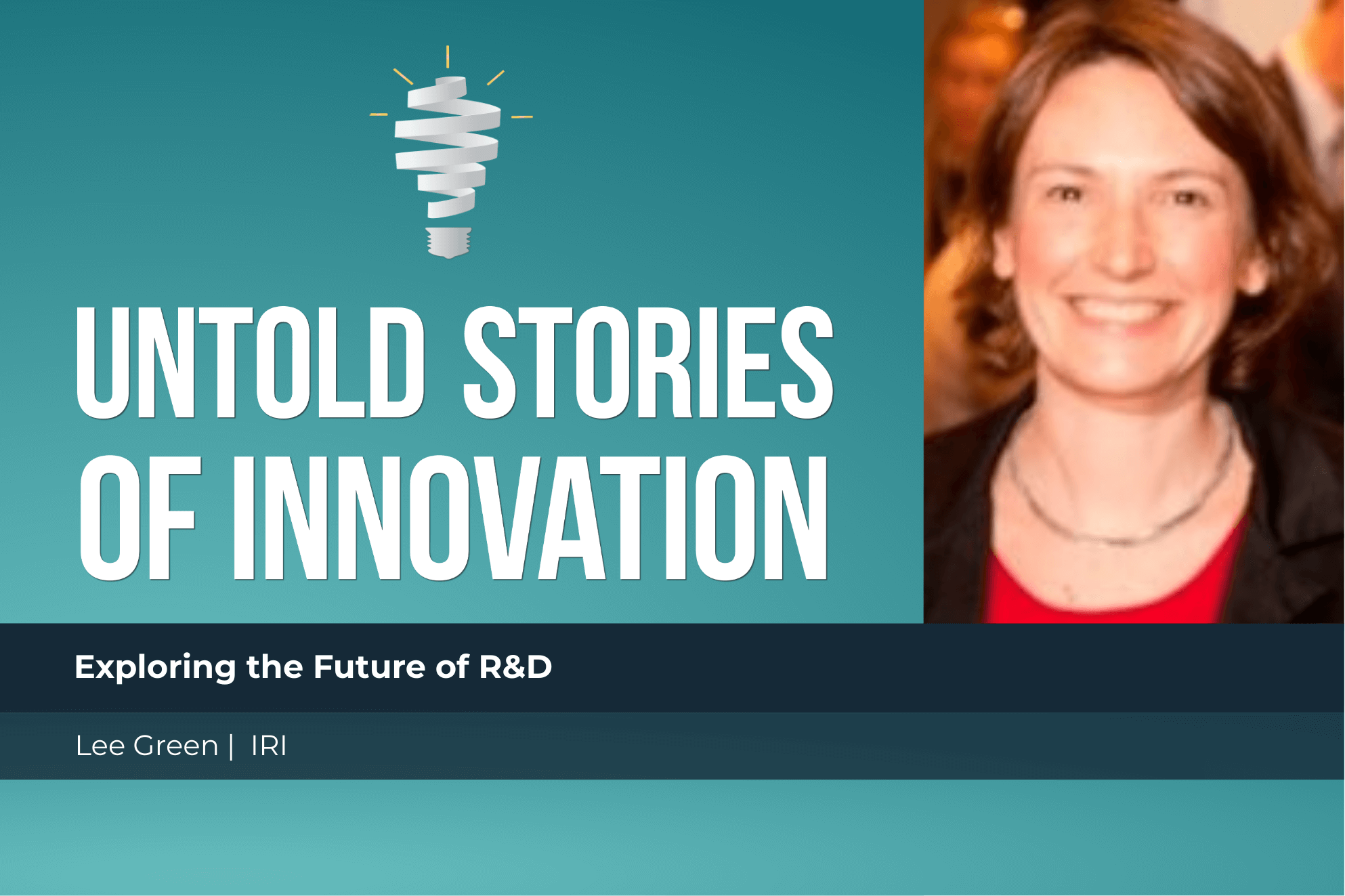
Exploring The Future of R&D - Untold Stories of Innovation
“Hearing other people's input is really valuable and learning from those who have gone before you, but also learning from people who are relatively new to a field, and have a different background than you. And that's what I really like about what IRI does to bring people together, and exploring the future of R&D.” --- Lee Green
From today’s episode you’ll learn:
We speak with Lee Green of IRI about the future possibilities of exploring the future of R&D and her work with IRI, focusing on knowledge creation and knowledge sharing, marking this as the heart of what all innovators should be doing. Lee shares tackling different industries and levels of R&D and how to come up with recommendations that she uses to implement into organizations. Lee also gives great advice on collaboration and how other people’s input could lead you into a completely different direction for success.

Lee Green is the Vice President of Knowledge Creation at Innovation Research Interchange, where she primarily focuses on knowledge creation and sharing, and helps create possibilities for IRI’s 150 different member companies.
This episode is powered by data storytelling training from Untold Content and Data+Science. Transform your data into powerful visual stories by learning best practices in data visualization and technical storytelling. Whether you’re a PowerBI or a Tableau person—or just want to better communicate your data—this workshop will inspire you to see the stories that lie in the data. Learn more at untoldcontent.com/trainings/data-storytelling-training.
Katie Taylor [00:00:00] Welcome to Untold Stories of Innovation, where we amplify untold stories of insight, impact and innovation powered by Untold Content. I’m your host, Katie Taylor. Our guest today is Lee Green, she is vice president of knowledge creation at the Innovation Research Interchange, also known as Ayari Lee. Thank you so much for being on the podcast.
Lee Green [00:00:30] Oh, no, it’s my pleasure. Thanks for inviting me.
Katie Taylor [00:00:33] So at Untold content, we’ve been part of the IRI community for a little while now, and it’s such an impressive community of innovators and in manufacturing and really across so many different industries. And you have a national event. You have several regional events throughout the year as well. And can you tell us a little bit more about Ayari as a community of innovators?
Lee Green [00:01:00] So, yeah, IRI, we have about 150 different member companies. We call them member companies, but they actually encompass an industry professionals and things like that, but also federal labs, NASA, Dowi Labs, things like that, too. So it’s a real mix of individuals. And what I always say is that although the results of innovation are different for most of our members, the processes that they use to get there are often very similar. And that’s where we come in. We’re able to help members to look at the different ways that they get to their products and help them to figure out ways of improving those processes. So whether it’s finding the right talent or managing a portfolio of different projects or identifying those great ideas earlier and getting them to market faster, we try to help in all those different regards. And a key component of that is the personal connections that we make. We hold live events, but we also enable people to network virtually. We hold kind of discussion groups and things like that. And so we really want to be able to make those connections for people so that when they’re facing a challenge, it’s great if they come through us. But we think it’s even better if they go to somebody that they met at the IRI and at one of our events or in another way and are able to interact and communicate their challenges together and work together to help to solve them.
Katie Taylor [00:02:36] Yes, I think knowledge sharing and knowledge creation, harkening back to your title, which, by the way, is an awesome title. Did you help come up with that?
Lee Green [00:02:46] I did not. I didn’t. But it is the nice one. Yes.
Katie Taylor [00:02:50] And so but I see knowledge sharing and knowledge creation really at the heart of what all innovators should be doing. And so I am really drawn to IRI’s mission and that way. So can you tell us a little bit more about what it means to be the VP of knowledge creation?
Lee Green [00:03:09] So I have two jobs, really, and my overarching job is always making those connections, you know, providing good services for our members, that that’s everybody’s job at IRI. But my main focus areas are on our strategic side and on our research side. So the strategic side is basically we look at. The strategic environment in which innovation practitioners are doing their jobs, so what are those outside forces that are impacting how you’re able to do innovation in your or inside your organization? So we’ve done things like looking at the future of R&D. And that was a study to look at what R&D would look like 25 years hence. So when we did it, it was for Iara. Twenty, thirty eight is what we called it. So we came up with a series of narratives to help people explore what R&D could look like that far out.
Katie Taylor [00:04:08] What were some of those trends?
Lee Green [00:04:11] Exploring the Future of R&D Oh, goodness. There was a few years back now, but some of the more controversial ones were augmented humans, so people would be augmenting themselves to be appropriate for a particular job. So whether that’s implanting sensors within your hands and fingers so that you could so you could sense what was going on the factory floor or things like that, or whether it’s taking some kind of medication to make you able to stay up late or something minor like that. So that was one of the deaths of IP was another one that always kind of whenever I gave the presentation, people would get twitchy. When I mention that, I’m sure. But if you think about basically our assertion there was that it was going to be speed to market would largely replace patents as the means of getting value from things.
Katie Taylor [00:05:06] I think we’re already starting to see that trend. And in some industries and some sectors.
Lee Green [00:05:12] Yeah, certainly it was a really interesting study and some of it was way out there. We had four different scenarios that we came up with. And, you know, whenever I’m reading the news now, I know this study is more than five years old. Oh, gosh, it was seven years ago now. And and still what I’m reading the news, I’m like, oh, that came true. Or that’s not going to happen. Right. Right.
Katie Taylor [00:05:36] Yeah. I mean, that’s what’s so interesting about future telling. Right. So some of those predictions will happen and others won’t, but at least we’ll be trying to think five steps ahead.
Lee Green [00:05:47] Exactly. And the study itself was fascinating and it was great fun. But the challenge was that it was kind of so far out that our members couldn’t really take that information and do much within their own companies. Right. Some there are organizations that do forecasting and they do it very well. You know, Chevron and Shell do a spectacular report on the future and the US Army, actually, they go 50 years out, which is astonishing to me. Right. I don’t know how they’re able to do that. Having done twenty five years out, 50 years out just seems shocking. But there are companies that do it and they do it very well because we were looking at R&D as a whole. It was kind of hard to be, it was even harder to be specific than it is for when you’re focusing just on oil and gas or the military or something like that.
Katie Taylor [00:06:44] Sure. So one of the key elements of your work is around research and what research we can conduct to better understand innovation processes and practices and what works and then how to produce managerial implications from that to. Right.
Lee Green [00:07:01] Exploring the Future of R&D That’s right. Yeah, that’s the second half of my job. So that’s my other hat. And, you know, my goal there is always to get members to coalesce around a particular challenge and get a core group of people from different industries. And I like to get different industries, different levels of seniority and maybe even slightly different roles within their organizations. And then we work together to tackle that challenge and come up with recommendations that hopefully others can and others can implement within their organizations.
Katie Taylor [00:07:36] I love the collaborative nature of what IRI is all about because I think historically anyway and still this is true, companies were a little less prone to interact or share their trade secrets or their IP. And I know that’s still a concern and it’s still carefully navigated for Ayari members. But the fact that you exist and that so many incredible companies and organizations and public sector agencies participate I think lends a lot of hope to what’s possible when you open innovation a bit and you invite conversation and collaboration, especially around shared challenges.
Lee Green [00:08:20] Exploring the Future of R&D Yeah, it’s you know, it’s hard to strike that balance. You know, one of our programs is the networks and those focused mainly on different techniques. All areas of R&D, so we’ve got a network around intellectual property, which, you know, the irony isn’t lost on us. There is also new business development, external technology, things like that. And so they’re focused on that particular element of how you get R&D done. And one of the most popular elements of those networks is that they meet twice a year. And the first two hours of every meeting is a roundtable discussion. And it’s when people can come together and they share their current challenges and they get feedback, live feedback from their peers on how they can attempt to tackle them. You know, whether it’s just commiseration, like, oh, yeah, we’ve got that problem, too, or it’s, hey, we tried this. Why don’t you give it a shot or we tried this. It didn’t work. So don’t bother to add that one. Why don’t you try this instead? And so that’s always a very popular element of that program. And the challenge has always been to make sure that people feel comfortable in that space. And so people are always asking me, what can I have the notes from that session? And we actually don’t take any notes. We don’t recorded in any way because it’s one of the I always whenever I used to go to those meetings and I would introduce IRI and kind of lay the ground rules for the conference, I would say, well, it’s like Vegas, you know, whatever happens, it network stays and networks and, you know, just to put people at their ease, you know, and I would say you’re welcome to attribute the ideas to something you learned at Ayari. We really want you to do that. But never say like, oh, I learned this from Joe Blow at Acme Corporation. You have to be very specific. And, you know, that program has been running for many, many years now. And I’ve never heard of a problem of somebody saying, hey, you got me in big trouble. You shouldn’t have shared that. But it’s been wildly successful in that way. People feel safe. And that’s really that’s something that’s lacking in a lot of different areas now.
Katie Taylor [00:10:43]Exploring the Future of R&D Yes. It’s so powerful. I want to linger on this idea a minute longer with you and and think about in your opinion, I’d love to know what role you kind of hearken to it already. But to me, this speaks so powerfully to the role that story sharing plays in innovation in particular, and some of the mental gymnastics that innovators have to go through as they come up with new ideas, you know, take them through different gates in their stage gate process and kill projects or shelve projects or move forward with projects, learn from failures, celebrate successes there. So it’s such an emotional rollercoaster type of work. And so the ability to share and in a more open and honest way about those challenges to me seems very powerful. And so tell me more about, you know, your thoughts on story sharing across industries in that way.
Lee Green [00:11:42] Yeah, as you say, it’s very important and something that a lot of there’s a misnomer out there that scientists aren’t able to explain to people, you know, lay people, if you will, what they’re doing. The people that I’ve interacted with at IRI are very passionate about their work. And if you get them talking, it’s often difficult to get them to stop. And most of the time they are able to share with me. And I have a social sciences background. So a lot of the stuff that they’re doing is completely over my head. But they’re able to share with me what they’re doing. And so but it’s taken them a long time to get to that point. It’s not something that people get training for. As far as I’m aware, it’s not commonly trained for an organization. That’s a bad way of making sure it’s people don’t normally get that training during their educational process. It’s true as far as I know.
Katie Taylor [00:12:43] Right. I mean, so my personal background, too. I’m a former research professor and have worked in collaboration with different R&D stakeholders, leaders and engineers, scientists. And in those roles, I saw that challenge again and again. And I’ve spoken with a lot of scientists and with other technical writing professors who analyzed those trends to see that most scientists really don’t get very much communication and writing training, even though many of them are expected to publish really significantly and through some ayari research. I recently learned, too, that in order to progress into leadership levels in their organizations, they really need strong communication and writing in those interpersonal skills that are so important to being able to explain value. And impact and align the research efforts and the developments coming out with the larger organizational mission. So all of this work is so I’m sorry I already jumped in to do what you were saying, but I am passionate that this should be part of training, especially among individuals in the innovation community.
Lee Green [00:13:55] Exploring the Future of R&DYeah, I agree. I think part of the reason that the people that I’m seeing are so able to share with me in layman’s terms what they’re doing is that kind of self-selecting aspect of moving into those managerial roles. So the people who aren’t able to communicate in that way often don’t make it into the management side of things. And so the people who are doing are staying on the scientific side. They are moving on the fellowship track. So we often hear about dual ladders. And, you know, they’ve been changing that around a lot lately. There are more different types of ladders. But when I first began in this several, several years ago, there was a dual career track and it was. Yeah, that’s easier than technical. Yeah. The technical folks went on to become fellows or you could go on and move into the management track. But what I think is so impressive to me about the people that I interact with through my job, you know, IRI members, is that the people who move to the management track, they don’t they don’t lose that scientific background. You know, they’re still famous and physicists and things like that. But they’re also expected to have that management acumen as well. And that’s really challenging. You know, that’s why these clothes. It’s so impressive what they’re able to do because they have to understand the science behind what’s going on so that they can understand how to get the products made and what the processes are. But they also have to be able to manage that entire process. And that’s a serious spread of skills that are required of these individuals.
Katie Taylor [00:15:43] Exploring the Future of R&DYes, yes. And I think the pressure is heavier than ever before for chief innovation officers or chief technology officers to not only manage their teams well and to still hold the technical knowledge and expertise, but also then to be able to take those findings and communicate them to the other C suite leaders and the, you know, stockholders or other investors or shareholders or even consumers to be able to say, here’s why you should trust that we are, in fact, innovative, and here’s why you can believe that the the the projects that we’re working on will matter. And so really having that scale of being able to market and explain and have thought leadership in those roles as CIO and CTO, I think it’s there’s more pressure than ever before in those roles to be able to do that part, too.
Lee Green [00:16:38] Exploring the Future of R&D Yeah, I agree. We actually did a study not long ago on the path that individuals were taking to become the CTO or the person who is the head of R&D and potentially innovation within an organization. And it was fascinating to me the very different paths that people were taking to get there. It almost was as if they needed to have this massive grab bag of experiences in order to get the role that they had. It was difficult to find areas that were similar across the board of all the individuals that we interviewed, because there were just so many different things that they had all done that got them to that position. It was very surprising to me.
Katie Taylor [00:17:25] Exploring the Future of R&D Yes, absolutely. I think it speaks to how important it is to companies that those roles are embodied by individuals who are highly diverse and who really can speak across silos and across areas of interest in the organization and be able to. You know, I wonder, too, if it has something to do with consumer demand for purchasing from companies that they perceive as being innovative. And so now innovation and technology, they really can’t be boiled down to any one silo in the organization. They really have to permeate all that we do.
Lee Green [00:18:04] Exploring the Future of R&D It’s true, we see this particular study as well, one of the reasons I was talking about the whole head of R&D versus CTO versus chief innovation officer is because so many different organizations are struggling to figure out how it all fits together. It’s how do you integrate R&D and marketing and innovation and manufacturing and all of these things to ensure that you’re innovative and you just put a chief innovation officer at the top of all of them and assume it’s going to trickle down. That seems a bit hopeful, but you just don’t know. And so companies are trying to move things around in my experience, or they’re trying to figure out what the best fit is there. And it’s very challenging.
Katie Taylor [00:18:56] Exploring the Future of R&D It is. And I think in the organizations that that we’ve worked with in particular, I think the the ones where there’s a lot of collaboration happening between sales and marketing and R&D, that tends to really help accelerate the ability of that organization to be perceived as innovative because the insights of their experts and their SMEs, if you will, are not left at the lab bench or only getting presented at scientific conferences. They’re also getting pulled into thought leadership pieces that if marketing and R&D work really well together, they can create a relationship where they are. Marketing is helping R&D to translate their insights and establish thought leadership without losing the technical nuance that makes their research accurate and evidence based and clear. But, you know, leveraging it in a way that purchasers can understand and that really just different stakeholders can understand or stockholders. So that sort of collaboration, I think, is more important than ever.
Lee Green [00:20:09] Exploring the Future of R&D You know, it’s funny because I’m actually trying to launch a project now and we’ve been really struggling to get it off the ground because it’s called encouraging autonomy and empowering R&D teams. And one of them was many different members who’ve kind of come and gone on this project. And that’s part of the reason we’re struggling to get it off the ground is because everyone seems to want a different piece. But one of the complaints that I’ve heard from that project is that marketing can sometimes and this is obviously not always the case, and this was one individual’s experience that they shared with me. But when R&D and marketing are combined, R&D can feel like they’re almost lurching from one marketing and sales, not whim, but desire and push to the next. And R&D is not necessarily able to. Push their own agenda and say, well, these are the things that we’re able to come up with or these are the innovations that we’re working on, because they’re almost being overshadowed by the demand that’s being seen externally. And so there’s this kind of push and pull between the two of them of how you get the right balance between getting input from sales and marketing, but also allowing innovators to to do what they do best, you know, come up with new ideas and come up with new technologies and giving them the independence and the freedom to spend some time, you know, whether that’s, you know, skunkworks or innovation time, as some organizations call it, to let them really explore and play and figure out what they want to do. And so it’s so challenging when, yes, you want to break down silos and yes, you want organizations to be open and sharing information. But at other times, they feel almost kind of piled on. They feel like they’re having to serve so many different masters that they’re not able to accomplish and do what they do best.
Katie Taylor [00:22:16] Exploring the Future of R&D Oh, it’s so hard. Yeah, it’s so hard. And another serious challenge is when marketing might want to expand or inflate a potential impact or claim in a way that R&D is not ready to articulate or that they’re concerned about there being an evidence base for. And so there’s a true challenge there in not, you know, over selling and not only thinking about what’s like the right spin. Right. Like data still matters. The research still matters. And you have to tell what is true. And so that’s another important rule of play. I think when we’re talking about how marketing and R&D might play well together, I actually haven’t seen any organizations where they are combined. Is that what you were mentioning?
Lee Green [00:23:13] Exploring the Future of R&D No, no, I haven’t seen that at all. But there I heard of an instance where marketing was on top of. Yeah, I’ve seen that chief marketing officer, the VP of R&D. I can’t remember what the structure was in this particular organization. But there was marketing R & D that came under marketing somehow. And that was very challenging.
Katie Taylor [00:23:40] Exploring the Future of R&D I’ve seen. Yes, I see what you mean. And another for just listing challenges here to this whole thing. Don’t give up at the end of the day. But yet another challenge is really regarding time. So for sales and marketing, typically the most important and critical thing is the annual roadmap. So that year’s priorities, whereas as the innovation team, you’re oftentimes being charged to think bigger than that and longer term than that. And so being able to an inside of enterprises where sales and marketing sort of rule major decisions, being able to challenge, you know, as an innovation team, being able to challenge sales and marketing to really still champion and get behind innovative ideas that might not land on the annual roadmap, but they might land on the one that’s two years from now. That can also be another challenge. But I think confronting that and being clear that they, you know, as an innovation leader, being open to understanding and empathetic, that I get that these ideas are longer term. But we really need your support as a champion and think of what could happen, you know, in the short and long term if we were to to greenlight this particular idea or project. That’s one piece of advice, I guess, for navigating that challenge.
Lee Green [00:25:05] Exploring the Future of R&D Yeah, it is very difficult. And I think the ability of innovation practitioners, particularly those who took that management track that we mentioned, to be able to communicate and to explain what’s going on and how the processes work and not use a bunch of jargon that’s going to make people shut down and stop listening to it is very important. That’s why there’s that communication element that’s so important for the people who end up taking the management route.
Katie Taylor [00:25:38] Exploring the Future of R&D Yeah. Tell us about some of the other research projects going on through IRI right now, a particular favorite of mine that is coming out with an article, hopefully fairly soon is brilliant failures. Yes, I’m working on that. Yeah, we can talk about I love a project. I do, too. I’m finalizing our revisions this week, actually. Yeah. Ready for resubmission.
Lee Green [00:26:06] Exploring the Future of R&D Oh excellent. It’s it’s just been such a fascinating project and yeah, it was it’s amazing how much it has the themes of that project are impacting the themes that I’m having on other projects as well, because in order to have in order to be comfortable failing, which, let’s face it, most people are not especially high achieving individuals who have worked for years to get their Ph.D. and then to move into an organization. And so these are people that are used to doing well and to be able to say I’m OK with the fact that this project failed. That’s pretty significant. And it’s kind of a buzzword. People want to be able to feel comfortable failing and people want to hear about the failed cases and how people learned from their mistakes. But it’s challenging because not a lot of people are willing to share that information. So it has to be very nuanced in how you approach it. And one of the roadblocks that we had with this particular project was identifying case studies. And case studies are a very important element in a lot of our projects and being able to get eyes into three to five companies is very important to us, and it really helps to tell the story of this particular project and how these things work in those organizations. And so trying to get people to participate in a case study called Brilliant Failures was really hard.
Katie Taylor [00:27:42] What kind of roadblocks did you come up against the stigma?
Lee Green [00:27:46] Yeah, very much the stigma. There was at least one company that just flat out said, we’ll do it, but you got to change the name. And the project team was adamant. They said we’re trying to break down the stigma and we’re keeping our name. So admittedly, this was fairly far into the project. And so they were they were pretty entrenched at this point earlier on. They might have been a bit more willing to change, but no, they stuck to their guns and they got their case studies. But it was hard. It took longer than we thought and it was challenging. But we got there in the end. And what I’m enjoying is a lot of the projects that I’m working on subsequently, this encouraging autonomy project that I mentioned and a couple others on, actually one on time to market speed to market, where we’re kind of workshopping the name there a little bit interesting. There’s a lot of failure, but also a kind of psychological safety. And, you know, because particularly with the encouraging autonomy, one that I’ve mentioned a lot of that is if you feel empowered, then you feel OK. If you make it, if you make a mistake, you’re not terrified that you’re going to lose your job. And so feeling empowered is also what ties into, you know, being willing to take risks and being willing to accept that sometimes those risks are going to turn out well for you, being comfortable that you’re probably still going to have a job after that happens. And so it’s all that kind of psychological safety element. And so I’ve been sharing a lot of information from the Brilliant Failures Project with other projects down the line, because so much of it is so much of it is intertwined.
Katie Taylor [00:29:41] Exploring the Future of R&D Yes. Well, one of my favorite moments from last year’s IRI conference when I went to the panel discussion where they were presenting findings from the brilliant failures research and one of the things they did in the beginning, Jeff Bezos, of course, Amazon CEO, had just released his annual letter to shareholders. And in it he said, you need to expect more failures from us this year because if we’re going to have successes, you’re going to see not just more failures, bigger failures and how he worded it. And the research team shared that. And I remember the room just sort of I think was energized by that idea that, oh, we’re we’re in a new world now where there’s an expectation for failure and that, in fact, they need if you’re not creating bigger failures, that may be a sign that you’re not taking enough risks.
Lee Green [00:30:33] Exploring the Future of R&D Yeah, yeah. And it’s very interesting and very challenging to get that mindset going in a company where you’re not used to that. We did a recent study on balancing risk in the R&D portfolio and so much depends on the culture around risk within an organization. If you feel that your company is willing to take risks, then you’re more likely to feel that you can go ahead and try that different technique or that new technology and things like that. And that’s what leads to these next steps. But also, it’s not just the culture and it’s not something that management can snap their fingers and change. You know, it’s a lot easier to take risks when you’re making, you know, an iPhone than it is when you’re making a drug that people are going to be taking. Yes. So when you’re in a heavily regulated industry, a lot of this is a moot point because, you know, if you’re less willing to have a brilliant failure when you’re working for GlaxoSmithKline, the stakes are a bit higher there.
Katie Taylor [00:31:50] Exploring the Future of R&D Yes, exactly. Yes. Yes. In health care, medicine or in aviation, high reliability industries. Yes. The idea is to minimize risk. And but I like this research that you’re talking about, where you’re thinking of how to diversify your portfolio or certain projects, maybe higher risk and others are lower and then, of course, putting all those stopgaps in place to protect against catastrophic failures.
Lee Green [00:32:18] Mm hmm. Yeah, and organizations do obviously, stage gate is is pretty ubiquitous at this point, you know, people have obviously modified it many times over the years and things like that, but it is a lot of it is very dependent on what kind of culture is within the organization and what kind of culture is coming in from outside to the, you know, the regulations and and things like that that companies have to face.
Katie Taylor [00:32:52] Exploring the Future of R&D What other advice could you share for the innovation community as they prepare to communicate and share and build upon their great ideas?
Lee Green [00:33:03] I think I’m going to have to be a little self-serving here and say that they really need to collaborate. Hearing other people’s input is really valuable and learning from those who have gone before you, but also learning from people who are new to a relative, relatively new to a field, and have a bit more of a different background than you. And that’s what I really like about what IRI does, is we’re able to bring people together who are from lots of different industries, and yet they’re able to find those commonalities and it helps them to get perspective and to see things from a different through a different lens. And that can really help to, you know, make your work better and make your work easier. If you’ve got people that you can call on and bounce ideas off of, that saves you time in the end. And it also helps to give you new ideas. And that’s what we really are trying to do. It, IRI, is to give people easy access to building that network of people that you can bounce ideas off of because it’s really helpful. I mean, just if you think about your professional life, you know, you want to get input from other people. But if you do that, when you have a challenge just in your personal life, you ask people questions. You say, hey, what happened here is the same professionally. You want to get different perspectives so that you can examine an issue from all the different angles and go forward and get a better solution.
Katie Taylor [00:34:39] Yes, I couldn’t agree more. And, you know, I’ve personally, of course, so invested in that idea and so honored to be part of the IRI community. And I’m grateful that you made the time today. I hope listeners will check out the innovation research interchange. You can follow them on social media at IRI Web. And of course, Lee Green, I am so grateful to get to talk about knowledge and research collaboration with you today. Thank you for being on the podcast.
Lee Green [00:35:09] Oh no, it’s my pleasure. It was a lot of fun. Thank you.
Katie Taylor [00:35:13] Thanks for listening to this week’s episode. Be sure to follow us on social media and add your voice to the conversation. You can find us at untold content.
